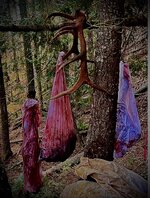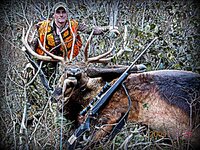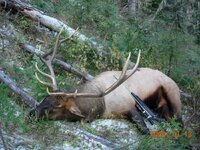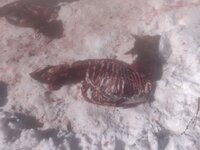I appreciate the op posting up my video and all the feedback on it. I hope it’s helpful for folks.
I’ve got the way that I do it, and I’ve done it a lot, but that doesn’t mean it’s the only way. I’d love to see this thread keep going with other tips and tricks people use. I’ve read plenty of comments under videos like this where someone drops a little idea and I think, “holy shit, I’ve never thought of that.” I’ll go try it, and a lot of them end up sticking. they become part of my routine.
On the bull in the video... yeah, flat ground, pretty atypical setup. That’s why we filmed it. It wasn’t planned, but it was a perfect spot to show the process, and the clients were willing to help. Imagine paying for a guided hunt and then getting put on camera duty, bwhahaa, so I’m grateful they were good sports about it. great guys
For reference, I do the exact same process even when a bull’s in a nasty hole or on a steep angle. Sometimes I’ve got to tie him off or brace him, but the steps don’t change. I never need a saw, just a knife. Works for me, but I get that everyone’s got their own style.
As for belly cut vs. dorsal cut, I almost always go with a belly cut. It keeps things cleaner and is more intuitive, especially if clients are helping. The only time I’ll do a dorsal cut is if I’m caping for a shoulder mount.
Last note. some folks mentioned the tenderloins. I did talk about that in the original footage, but I think part of it got edited out. If you have the belly going downhill and do a big belly cut to let the guts roll out a bit. It relieves pressure and makes it a lot easier to get in there for the tenderloins. I showed it the hard way in the video, but the key takeaway is take your time, don’t cut yourself, and remember that tenderloin is longer than most people think.








